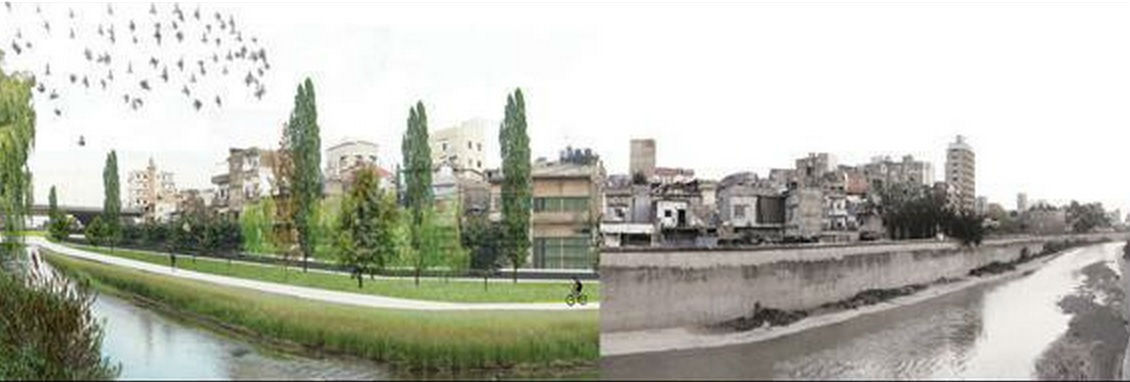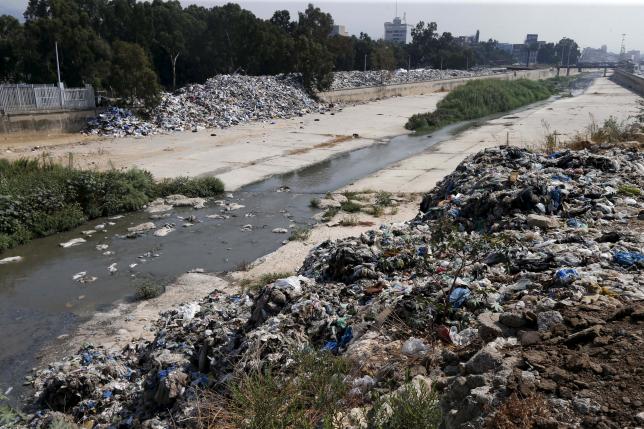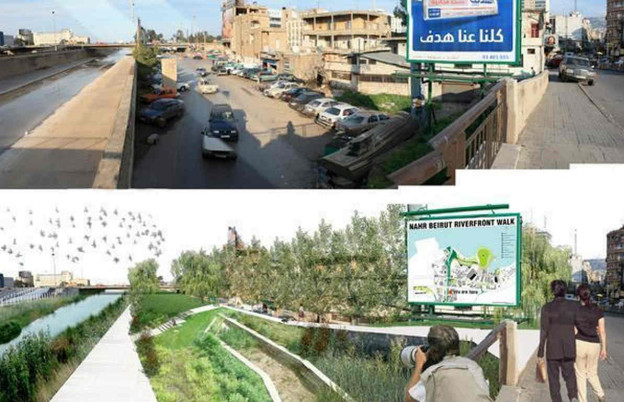Two years ago, a Lebanese architect called Sandra Frem revealed a project she had been working on since 2008 “seeking to beautify the Beirut River (Nahr Beirut) and make it an integral part of Beirut rather than a separate entity as is the case today”. Sandra thought we could make good use of the open spaces on both sides of the river and turn them into green spaces. Moreover, she thought that we could help solve the water shortage in Beirut by purifying and distributing sewage and rainwater.
Of course Sandra knew her project was a bit unrealistic (mainly due to politics) but I’m sure she never thought Beirut River would be turned into a huge landfill and become a threat to all the Lebanese. She wanted the river to help change people, instead it’s helping spread diseases that kill people. I’m sure she must be devastated by the current situation and what the Beirut River has come to just like we all are, but we can only hope that this is a temporary phase that we’re going through and that Nahr Beirut would be turned one day into “a beautiful and fun place that brings people together and alleviates the burden of life in this country”.
You can read the full article [here].
The architect’s project built bridges between hypothetical gardens along the river banks, and traced special routes for public transportation (buses or tramways). Her objective was to make walking a fun activity for Beirut residents and to transform the river into a space for relaxation for residents of the surrounding poor neighborhoods. “The river can help change the people,” she argues.
For Sandra Frem, a LAU architecture professor, talking about this project is all but unrealistic under these circumstances. She has since recanted “her dream” of carrying out such projects, focusing instead on working in her engineering office on small, more realistic projects. “This project is politically and socially sensitive. There is no political will to carry out such projects in poor residential neighborhoods, as preference now goes to towers,” she said.
 via NowLebanon
via NowLebanon












This is definetley a nice fantasy that Sandra Frem has presented.
Although the river is far from this fantasy. Maybe she should find a more suitable approach to the river, rather than a few renders of bike paths on the river that she’s mimicking from other parts of the world.
We need architectural solutions that take into consideration how this river is going to be cleaned; how the river is going to represent Lebanons’ identity rather than a copy paste of what a river ‘should’ look like.
It’s a reasonable approach, but I know that Lebanon needs more creativity than the usual when it comes to designing, and I feel Frem did not achieve that with this design.
Hello Rawand,
In the proposed project, the river pertains to Beirut’s ” identity” by proposing it as part of an infrastructural system that solves Beirut’s many problems:
1-treating independently the sewage and stormwater that runs in it to clean water, both of which could meet 70% of beirut non potable needs
2- capting stormwater through a network of ponds that will allow to decanalize the river
3- storing reclaimed water and use it in dry seasons
4- creating pedestrian connections and public space on top of such water system; through bike paths, pedestrian paths , playgrounds and parks that connect Beirut to its river–which are expressed through those images.
you could view those as mimicry of other parts of the world , but they are mostly basic human needs for a good urban life.
I think we should care less about an abstract search for identity in architecture, and connect to our rivers by allowing them to be part of our cities natural and urban systems, and part of our lives.
Best,
Sandra Frem
Sandra this plan sounds amazing and just what Beirut needs to revive its concrete laden streets. Is there any push to continue or has this plan been retired?